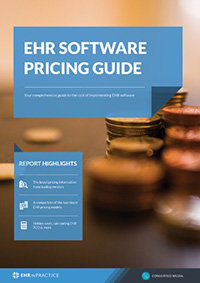3 Aspects of ICD-10 Practices Are Still Unsure About
As with most EHR and ICD-10 considerations, everything interconnects, but practices need to know how to meet the looming ICD-10 go-live. Working toward ICD-10 is not straightforward. Utilizing dual coding and effectively promoting provider buy-in are two ways to help your practice transition to ICD-10, but, as with all things, using these options to achieve ICD-10 implementation can come with a price.
1) Dual Coding Proposals
Dual coding is exactly what it sounds like—during transition, practices can code with both ICD-9 and ICD-10. CMS is practically silent on the subject, which can make it a scary place to venture. They only offer studies of ICD-9 and ICD-10 differences in reimbursement—you will not find any “here’s how you do it” pages from them. Practicing dual coding could cause processing issues on the insurances’ side, but dual coding offers benefits to your practice, too.
If I can say anything about dual coding from a medical billing perspective, it is this: use it to your advantage and take advantage quickly. What dual doing offers your practice is:
- Aiding your practice in testing their system’s ICD-10 readiness,
- Providing your staff with practice and training opportunities,
- Allowing your practice to begin recording pertinent patient data (to meet meaningful use, i.e. clinical data) because ICD-10 can be more specific than ICD-9
I do not code. However, it is important for me to see the differences happening on the billing side because it prepares me to argue with insurances effectively. Seeing both codes on the billing end (in the charge review phase) allows me an inside look at the types of diagnoses available and anticipated as being regularly used by the practice. Now is the time to practice with ICD-10. Not only will it ready the coding staff, but it can aid your physicians in getting ready too—they need to understand how their documentation affects the coding and what that means for reimbursement (specificity will be key).
2) Physician Buy-In
Your practice’s physicians might not be so keen on EHR and ICD-10 adoption. So, if physician buy-in is a consideration your practice has not yet thought about, consider these suggestions:
- Involve the physician in ICD-10. Ask them to use the system, a little bit at a time: implementing a consistent training schedule (for all staff members) and encouraging practice with a patient or more a day can stimulate some much-needed love for your EHR, and, by extension, ICD-10.
- Explain what the EHR’s role in ICD-10 is for, but do not make it sound better than it is.
- Ensure the practice leadership is on board with ICD-10 transitions happening around the office so the physician can jump on board, too.
- If providers are not using EHR to record important patient information and appointment information (which you need to effectively code), then hold them accountable for it.
Get creative. Change is scary for everyone and physicians are no different. Taking small steps is critical to introducing the EHR and ICD-10 in a digestible way. If you are stumped, hop onto CMS and check out their suggestions for physician preparation.
Recommended Reading: EHR Vendor Guide - Find EHR vendors able to offer insight into ICD-10
3) ICD-10 Cost
Besides the cost of an ICD-10 compatible system, both the above considerations are associated with a cost as well. Consider what it means to code everything in both ICD-9 and ICD-10. You are coding twice. Not only will coders need to take time to read the documentation provided by the physician and match it up to the appropriate ICD-9 code, but they will have to take their time to ensure they choose the right ICD-10 code, too. After all, everyone is new at this, so the process is not automatic and streamlined yet. Don’t be surprised if your practice needs to invest in overtime or additional help to make sure the work is getting done.
Additionally, if the practice cannot get the physicians on board with utilizing the EHR in a way conducive to ICD-10 implementation, your practice may spend extra time filling in the gaps the physician is leaving. Problems need to be identified before ICD-10 hits the stage—getting your physicians on board and documenting appropriately is important. Otherwise, it can cut into other duties around the office and mean more time spent in meetings or more effort exerted trying to get the physician to buy-in.
Free white paper

EHR Vendor Directory
Get the most up-to-date directory of EHR software vendors. Find the best software for your practice.

Featured white papers
Related articles
-

The Pros and Cons of the ICD-10 Transition: Does One Outweigh the Other?
The ICD-10 transition is less than a year away, but do the pros of ICD-10 outweigh the cons?
-

ICD-10 ‘grace period’ over, says CMS
All you need to know about the end of the ICD-10 grace period and updated ICD-10/DSM-5 codes for ...
-

ICD-10: where does EHR stand six months on?
How the ICD-10 transition has affected the landscape for EHRs and health IT



